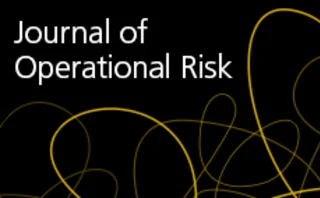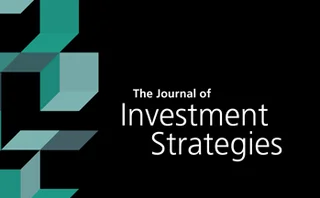Risk measures
Podcast: Acerbi on backtesting ES and FRTB’s patchwork rules
Banque Pictet quant explains a new backtesting method for expected shortfall
Quantification of operational risk: statistical insights on coherent risk measures
In this paper, the authors review some of the existing methods used to quantify operational risks in the banking and insurance industries.
From log-optimal portfolio theory to risk measures: logarithmic expected shortfall
In this paper, the authors propose a modification of expected shortfall that does not treat all losses equally. We do this in order to represent the worries surrounding big drops that are typical of multiperiod investors.
The utility of Basel III rules on excessive violations of internal risk models
In this paper, the author looks at the efficacy of risk measures on energy markets and across several different stock market indexes, and calculates both the value-at-risk (VaR) and the expected shortfall (ES) on each of these data sets as well as on…
Curbing rogue behaviour
Regulators should try to combat rogue trading by measuring traders’ risk-taking differently, say quants
A note on the statistical robustness of risk measures
This paper focuses on the parametric estimators of risk measures and uses Hampel’s infinitesimal approach to derive the robustness properties.
Shortfall deviation risk: an alternative for risk measurement
In this paper, the authors propose the SDR risk measure to consider the degree of dispersion of an extreme loss in addition to its expected value.
Comparing risk measures when aggregating market risk and credit risk using different copulas
The authors of this paper simulate realistic total bank return distributions by means of a top-down copula approach for different parameter settings.
Investors overlooking smart beta tracking errors, say experts
Few funds have tracking-error constraints, says risk institute
Outperforming benchmarks with their derivatives: theory and empirical evidence
This paper looks for optimal explicit constructions and empirical tests in regards to pricing and hedging derivatives with coherent risk measures.
Optimal trading trajectories for algorithmic trading
This paper derives explicit formulas for the optimal implementation shortfall trading curve with linear and nonlinear market impact.
What is the best risk measure in practice? A comparison of standard measures
This paper revisits the properties of risk measures and checks VaR, ES and expectiles with regard to whether or not they enjoy these properties.
Which risk–collateral channels affect loan management?
This study examines the empirical relation between loan risk and the economic characteristics of collateral, each of which may be associated with the empirical dominance of different risk-collateral channels implied by economic theory.
Estimation of risk measures on electricity markets with fat-tailed distributions
This paper proposes an AR–GARCH-type EVT model with various innovations for energy price risk quantification.
A combined regime-switching and Black–Litterman model for optimal asset allocation
The authors of this paper aim to test empirically the performance of several optimization algorithms that exist in the literature and then compare them, in both a single-regime market and a two-regime market.
Better risk and performance estimates with factor-model Monte Carlo
This paper presents a solution to a common problem in asset and portfolio risk, when a manager has such a short history of asset returns that risk and performance measure estimates are unreliable.
Practitioners must take risk measures with a pinch of salt
Buffett's warning on perils of volatility is well justified, argues Kaminski
A Fourier approach to the computation of conditional value-at-risk and optimized certainty equivalents
We consider the class of risk measures associated with optimized certainty equivalents.
Estimation of risk measures for large credit portfolios
In this paper, saddle point techniques are used in the computation of risk measures for large mark-to-market credit portfolios with stochastic recovery and correlation between obligors depending on the state of the economy.
Expectiles behave as expected
Expectiles' results are analogous to those of value-at-risk and expected shortfall









